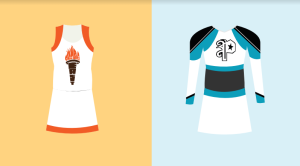Apex Legends Review
March 5, 2019
Released Feb. 5, gaining over 25 million players in just one week, Apex Legends has taken the gaming scene by storm. Apex Legends is a free to play battle royale game, similar to games like Fortnite and Playerunknown’s Battlegrounds. However, Apex does many things that those games do not, making it a very refreshing and welcoming member to the battle royale genre.
Taking place in the Titanfall universe, Apex Legends is a fast paced fight to the death between 60 different players. Unlike most of its competitors, Apex only has 60 people per game. While this may seem like a bad thing, the map is not quite as big as other games in its genre, which balances out to give players a comfortable pace to play at.
The main difference between Apex Legends and other games like it is that Apex feels like a completed game right from the start. While there are bugs, there isn’t anything game breaking, and it mostly feels like a fully polished 60 dollar game. Most battle royale games have been released as a work in progress and fixed as the players found issues. The problem with this is that the changes may not always come as fast as they’re needed, which may make players lose interest quicker.
Apex offers 8 different “Legends” to play as. Each legend offers a different set of unique skills and abilities. For example, the “Lifeline” character gives players the ability to heal their teammates and call in a care package full of useful supplies. Each legend has something to offer and none feel overpowered or overused.
Unlike most battle royale games out now, Apex Legends makes players fight in teams (squads) of three. While these people can be your friends, you can also join a random squad and hope for the best. However, the squad system in this game works very well, even with random people. You can choose to talk to your team through voice chat but don’t always need to thanks to the “ping” system.
With the press of a button, you can “ping” spots to go to, enemies, and useful gear to your teammates. While this may not sound important, it provides a useful and easy to use communication system. I personally have won games using no communication but the ping system with my team, proving it to be an effective form of communication.
Apex Legends also has a wide variety of guns and equipment to use. There are sniper rifles, SMGs, shotguns, assault rifles, pistols, etc. While it is mostly standard, each gun has something that the next one does not, which provides a good selection for everyone’s personal preferences. For example, the G7 sniper fires very quickly, but does less damage than the longbow rifle. While this sounds like a basic idea, most games don’t balance the stats on guns as well as Apex does.
As far as equipment goes, there are grenades for different situations, timed explosives, incendiary grenades, etc. As you may expect, there are also different levels of armor, helmets, and backpacks, providing varying levels of protection and carrying capacity. Better items will obviously be harder to obtain, but nothing ever feels out of reach or impossible to get by the middle to end of each match.
Apex Legends also offers microtransactions, a very mixed topic in the playerbase. Players can pay real money for in game items. However, these items are only cosmetic, and don’t offer any real advantage in battle, which is generally a good thing for the sake of balanced gameplay. As long as there is no advantage in combat, these microtransactions do not have an effect on gameplay and shouldn’t be a problem.
Overall, Apex Legends is a very refreshing addition to the battle royale genre. It felt like a polished, finished project right from the launch, which is definitely not common in free to play games, and especially not in battle royale games. It’s easy to run on PCs, and usually holds a solid frame rate on console, making it a game that everyone should at least try. If you aren’t a fan of Fortnite or PUBG, Apex might have what those other games lack that you want.






